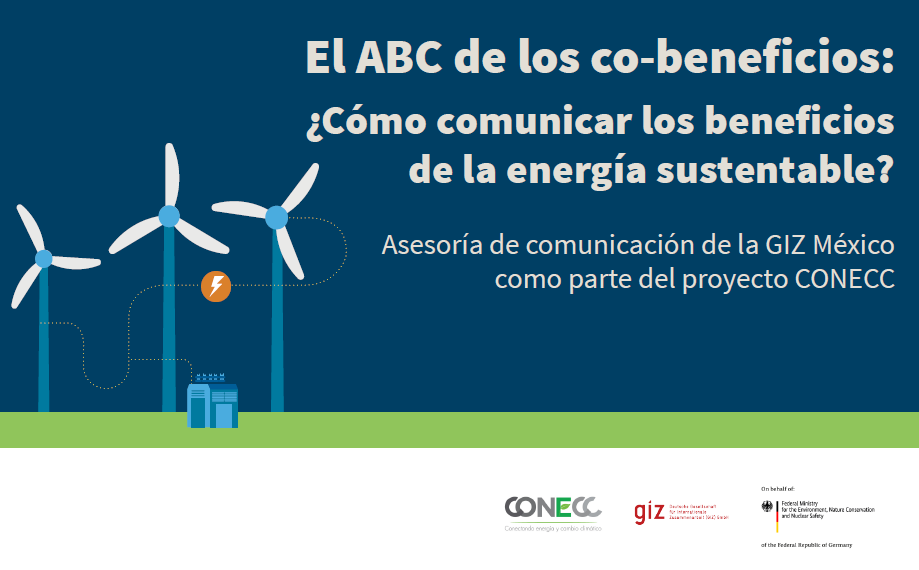The CONECC project carried out a workshop on strategic communication, alongside different state representatives, aimed at highlighting the social, environmental and economic benefits of sustainable energy.
Renewable energy and energy efficiency projects are key to reducing greenhouse gas (GHG) emissions and mitigating the effects of climate change. However, they also trigger co-benefits in social, environmental and economic areas. However, the decision-makers or implementers of these projects do not always have the tools to communicate the multiple benefits.
Therefore the GIZ through the project Enhancing the Coherence of Climate and Energy Policies in Mexico (CONECC), within the framework of implementing a pilot programme to quantify co-benefits, developed a communication consultancy to share best practices and tools for the communication of the positive effects of sustainable energy. Decision-makers accompanied them from subnational governments of the six projects taking part in the pilot programme, in the states of Hidalgo, Yucatán, Guanajuato, Coahuila and Tamaulipas.
During the counselling, basic concepts were shared to strengthen the mechanisms to communicate co-benefits, through communication strategies and plans: for example, by determining audiences and channels, building key message, and through strategic content planning. A toolbox was shared, with graphic and planning elements. The objectives of the toolbox are:
- To provide state governments with the minimum knowledge required to design a communication strategy that communicates the co-benefits of Renewable Energy and Energy Efficiency (RE and EE) projects.
- To offer a guide that facilitates the implementation of a communication strategy and the content plans derived from it.
- To provide graphic tools and pre-designed key messages, as well as monitoring instruments to facilitate specific strategies implementation and communicate the co-benefits of sustainable energy.
Various recommendations and good practices were also presented that focus on highlighting these benefits in other areas and strengthening local sustainable development: examples include the use of storytelling, or emotional narrative construction and monitoring and performance indicators that can measure and eventually improve communication strategies.
The coaching drew 40 participants from several sectors including energy, climate change, water resources and economic development. Representatives from six states participated. With this advice, the participants of the pilot programme are expected to have the capacities and tools to communicate the co-benefits that their projects generate.
You can download the presentation of the workshop with the essentials of co-benefits communication, as well as a guide to the toolbox. For questions, please contact cobeneficios@giz.de

